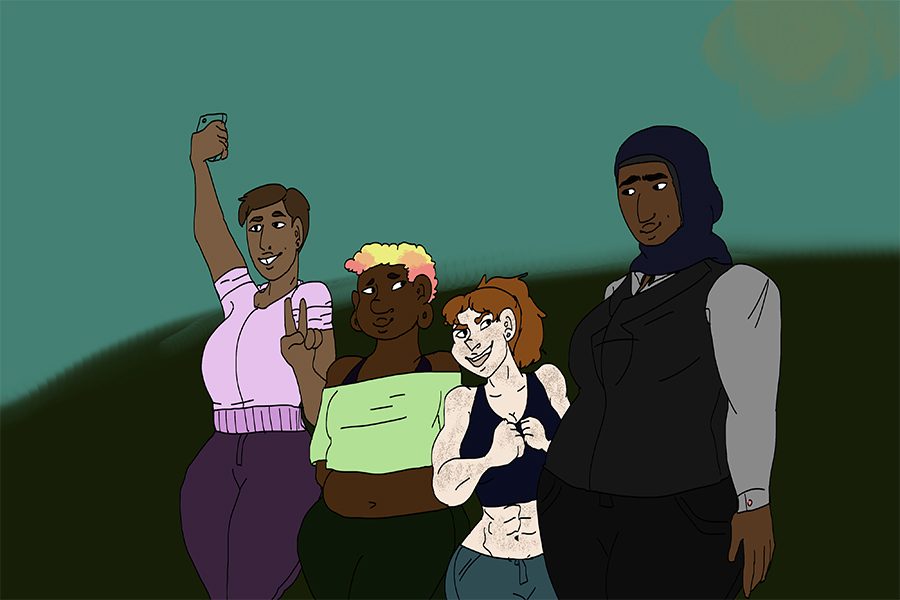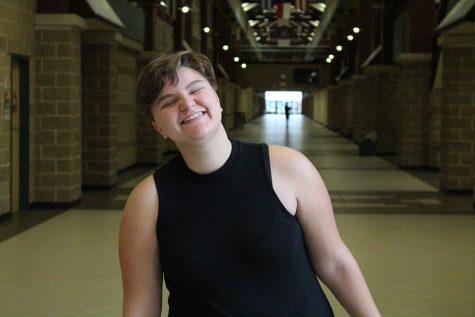Guide to making original characters
Original characters can come in all shapes and sizes!
November 30, 2016
Original characters are self-explanatory in name; characters created by a person for a story, either their own or one already established. Many people have heard the term “Mary Sue” used to describe characters that seem repetitive and overused, normally the perfect, flawless, heroic main characters. In this guide, I want to show you how to create your own original character without having to worry about the backslash that cries “Mary Sue” at every character that seems to be slightly heroic nowadays.
- What is your story?
A lot of what your character is can depend on the story you want to create a character for. Try to have a story laid out before creating your characters; science fiction stories may present characters that are methodical, and somewhat rebellious; fictional adventure stories may have characters that are outgoing types, willing to break the rules; fantasy stories may contain the proper royalty characters, or the flighty troublemakers. Your story can make all the difference when it comes to your characters, so think about it wisely.
- What are their physical and personal traits?
A character’s traits can make all the difference for many critics when it comes to determining a “Mary Sue” type character. If your character is a half-dragon, half-vampire, half-angel/demon hybrid with magical god-like powers that are better than everyone else’s, that is an immediate red alarm for most critics, and readers/watchers alike. Viewers don’t want an almighty, perfect character with no weakness, they want a character with flaws, and troubles, a character that they can relate to. When a character is made flawless and all powerful, it actually turns a lot of people away from that character, which is why, when it comes to a lot of popular series, many viewers focus on the minor characters; because the minor characters tend to have flaws, and people tend to relate to the second hand man more than the hero with no fear.
- What are their faults and weaknesses?
Now that you have a story and possibly established a few ideas for characters, to avoid the stereotypical “perfect” character, think of what your character’s flaws may be. Do they have allergies? Intense fears that may hinder their progression? A tragic backstory? Something minuscule such as biting their fingernails to the point where they bleed? Does your character stumble, or fumble with their words? Do they have a bad memory that affects their ability to complete the “final” chapter of their story? Another thing to keep in mind is how their flaws affect the story. If your character has a flaw, such as they can’t tie a lasso in a science fiction story, the flaw would be pointless.
- What’s their relationship to other characters?
Living things have interpersonal relationships. What is your character’s relationships with your other characters? Do they love one character, but that character’s in love with their worst enemy? Do they have a large group of friends, or a small group of friends? What is their relationship with their parent(s) or guardian(s)? Do they have a majority skewed relationships, or are most of their relationships loving? One way to do this is to create a chart. Mark all your characters, then, in different colors, mark their relationships to one another. That way, you’re not leaving empty gaps as far as your character’s relationships go. Another thing to think about is if the relationships change as the story progresses, as in real life, people tend to change. Which leads to my next point…
- Are your characters dynamic?
Dynamic characters are characters that undergo a change in the story. Does your main character change at all? It’s more realistic for a person to go through a change than to NOT go through one, so think carefully. Especially if your story has moments of excitement and times that bring doubt within the character, a change is a realistic approach to bring to your character. Do they go through a trial that causes them to rethink what they were originally fighting for in the first place? What if they meet a new character, and that character makes them realize an aspect of themselves that they never thought of before, and thus want to change? Change is an important part of character development, and your character should develop as your story goes on.
- Have fun with it!
This is merely only a guide to creating your characters. Really, you could do whatever you want with them, and use them in whatever way you desire. Many people, such as myself, don’t even write stories for some characters; personally, my characters are a good way to vent, or use in situations that I face in everyday life, and ask myself, “How would my characters do it?” If you do happen to have a character that many people would consider a “Mary Sue,” don’t let it get to you too much. Many people critic pretty harshly, and while critics should be listened to, it’s okay to take them with a grain of salt. Remember, in the end, it’s YOUR character, and only you can change who your character is and is meant to be.





